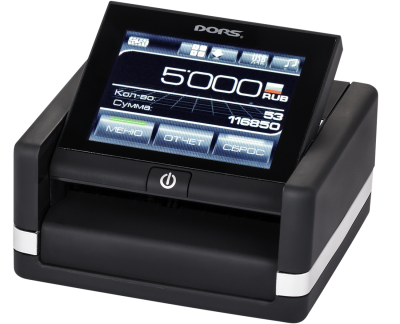
DORS 230
Automatic multicurrency detector
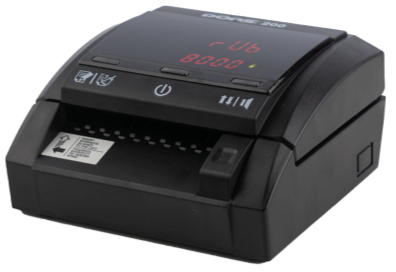
DORS 200 MULTI
Automatic banknote detector
FT 550
Automatic banknote detector
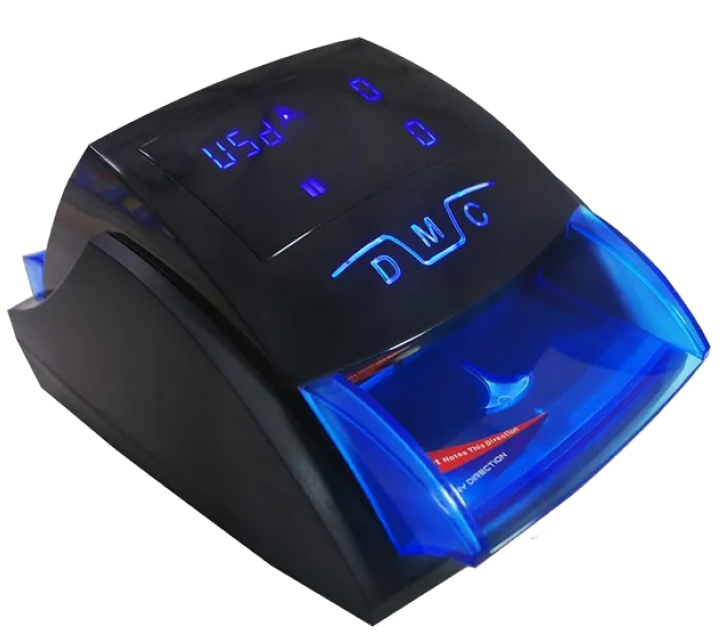
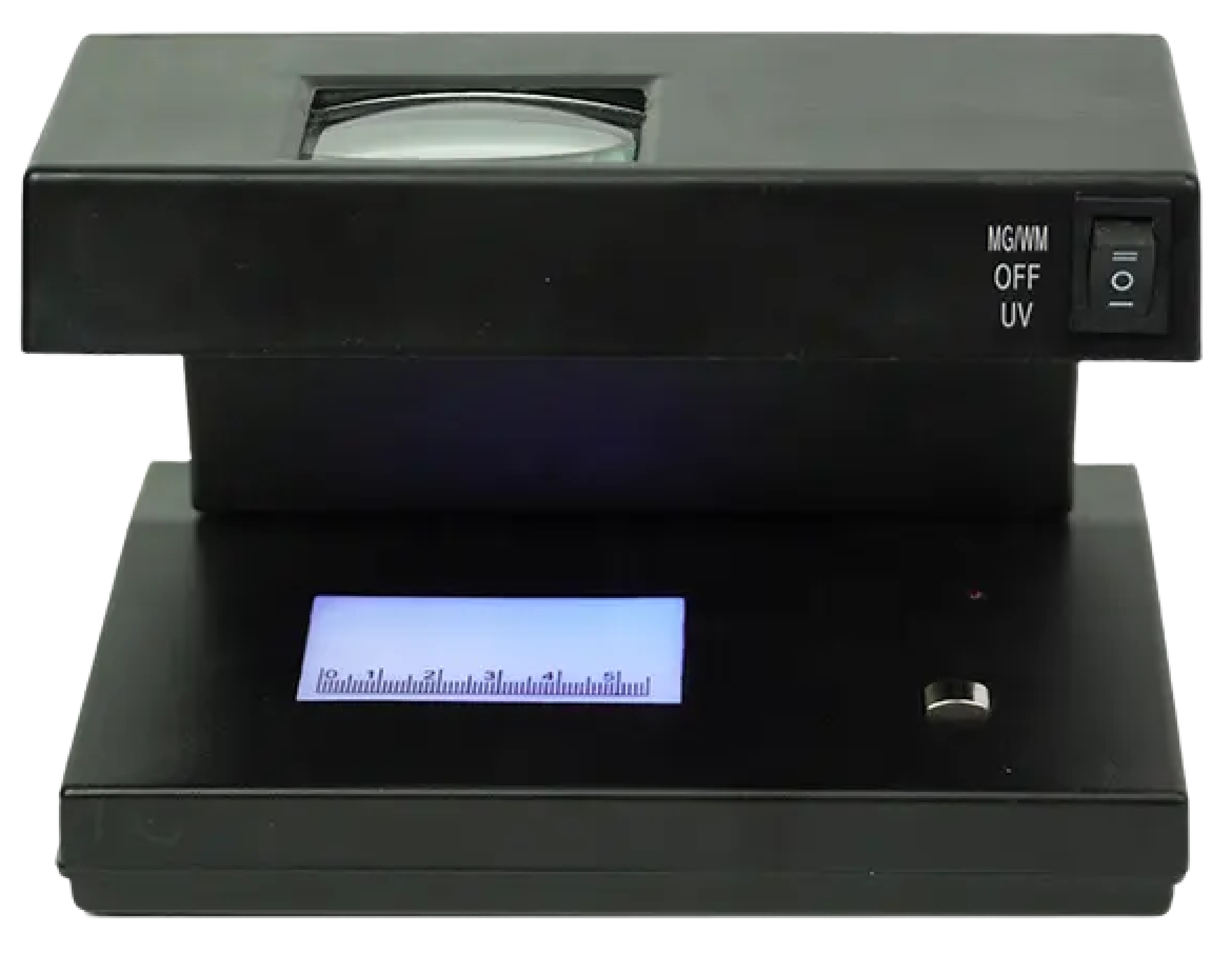
UV 2038 (LED)
Ultraviolet banknote detector
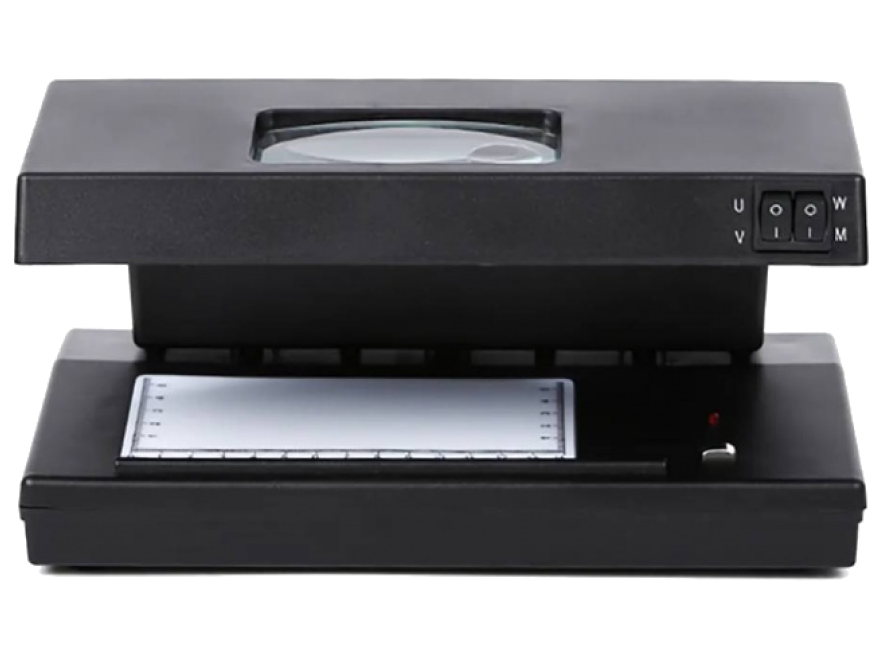
UV 106M10
Ultraviolet banknote detector
180
Multifunctional banknote detector
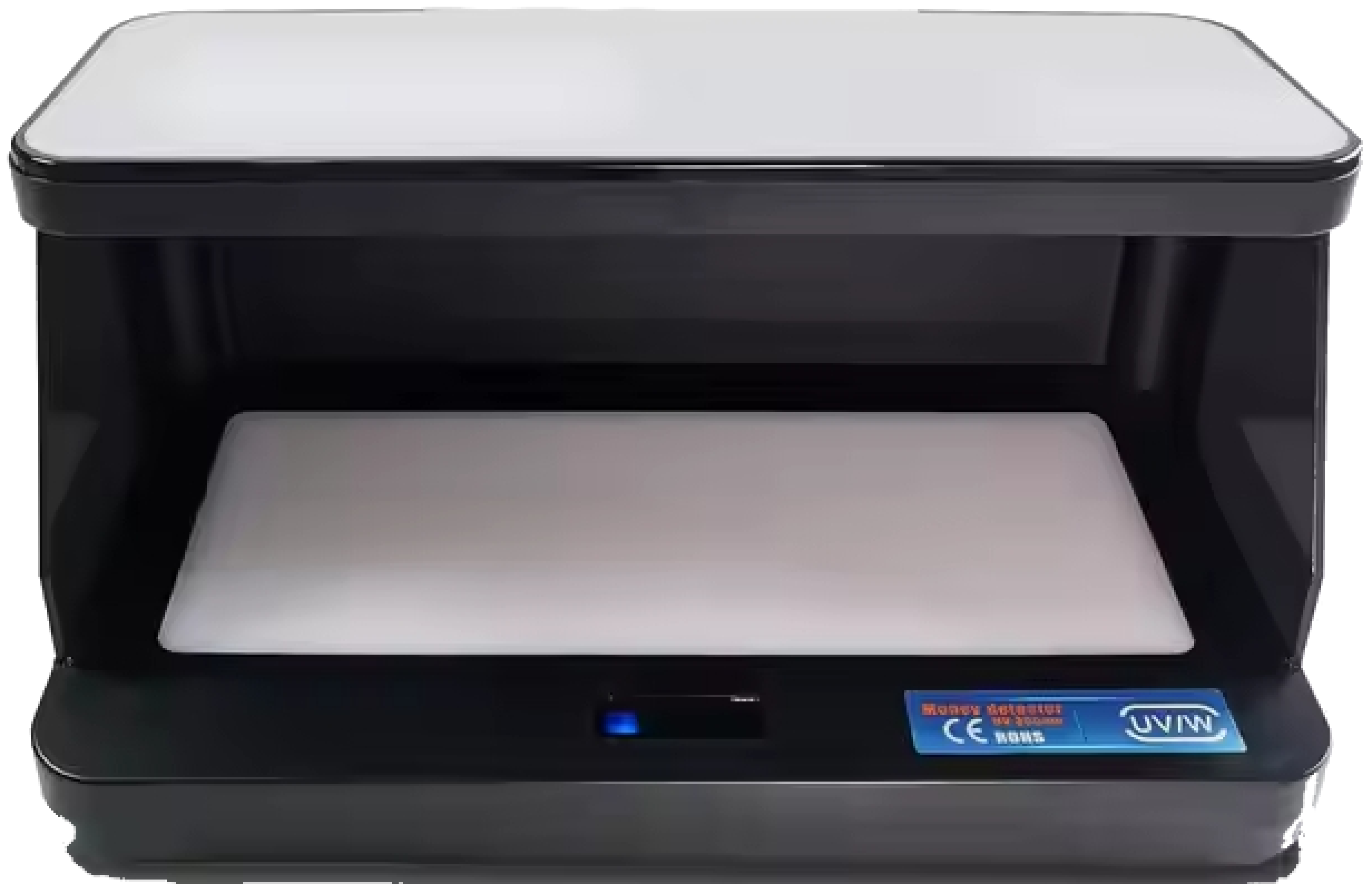
FT 118
Banknote detector
More details
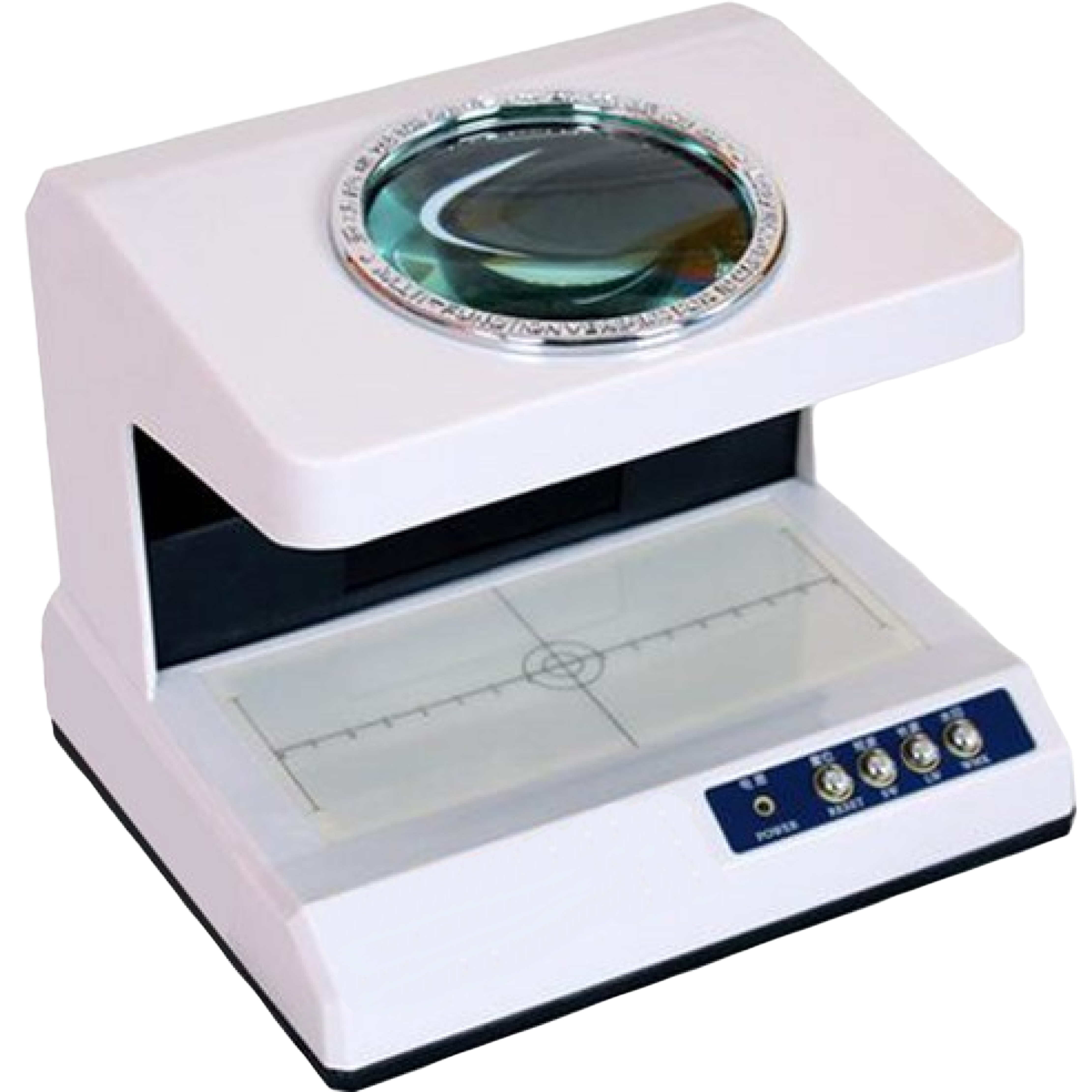
Specifications
Weight
Dimensions (W×D×H)
Banknote output directions
Banknote feeding method
Display output
Detection types:
Verification speed
Display
0,37 kg
115х112х60 mm
Forward / Backward / Into the detection unit’s special tray
Any side in all four orientations
Notification of a suspicious banknote detection
Denomination of the last verified banknote
Total sum of authenticated banknotes
Report on the number of banknotes for each denomination
Denomination of the last verified banknote
Total sum of authenticated banknotes
Report on the number of banknotes for each denomination
Anti-Stokes mark detection
Magnetic mark detection
Infrared control
Background fluorescence control under UV light
Optical density control
Banknote size verification
Spectral ink analysis
Magnetic mark detection
Infrared control
Background fluorescence control under UV light
Optical density control
Banknote size verification
Spectral ink analysis
Up to 100 banknotes per minute
LED, red illumination
The DORS 200 MULTI ensures the authenticity of banknotes using an eight-level control system, displaying results on the screen. It supports up to 10 different currencies, combining advanced technology with user-friendly functionality to guarantee confidence in every banknote.
Distinguishing features
The DORS 200 MULTI features an innovative banknote recognition system, including an intelligent Anti-Stokes control module (iAS), a multi-range CIS scanner, magnetic and ultraviolet sensors.
Banknotes can be inserted into the DORS 200 MULTI in any orientation and from any side. For convenience in limited workspace environments, users can select the direction of banknote output—either towards or away from the operator.
100% Protection Against Counterfeits!
No special knowledge of banknote security printing and verification methods is required for operating the device.
100% Protection Against Counterfeits!
No special knowledge of banknote security printing and verification methods is required for operating the device.
Workspace Optimization
The device is adapted for cashier zones with limited workspace.
ARBITRARY BANKNOTE FEEDING
No need to sort banknotes by side or orientation.
Always up-to-date validation database with easy USB updates.
FAST UPDATES
DENOMINATION SUMMATION
Displays the denomination and total sum of genuine banknotes on the screen.
MULTI-CURRENCY
Verification of 10 types of currencies.
ELIMINATING HUMAN ERROR
Automatic decision-making on authenticity.
Saves workspace.
COMPACT SIZE
Specifications
Weight
Dimensions (W×D×H)
PC connection
Built-in battery
Power supply
Verification results displayed
Verified banknote dimensions
Banknote positioning
Control interface
Detection unit
Verification speed
Display
0,5 kg
115х104,5х86 mm
miniUSB port
Li-Polymer 2300 mAh
100–240V ~ 50/60 Hz
Denomination and currency of the last verified genuine banknote
Total number and sum of genuine banknotes for the current currency
Breakdown by denomination for each currency: quantity and total sum
Suspicious banknote notification
Error codes
Total number and sum of genuine banknotes for the current currency
Breakdown by denomination for each currency: quantity and total sum
Suspicious banknote notification
Error codes
Multi-range CIS scanner, built-in automatic analysis system for currency type, denomination, and authenticity features
Width: 58–85 mm, Length: 100–181 mm
Insert narrow side first
Touchscreen
60 banknotes per minute
Color LCD, 8.9 cm (3.5″) diagonal
DORS 230 is designed for determining the authenticity of banknotes of various currencies in automatic mode. No special knowledge of banknote security printing and verification methods is required to operate the device.
Banknote recognition system
To ensure authenticity verification, the DORS 230 uses a high-resolution multi-range CIS scanner (Contact Image Sensor technology).
Both the entire banknote image and the positions of specific security elements—such as IR marks, watermarks, security threads, and serial numbers—are checked. Scanning in transmitted light reveals security features hidden beneath the ink or within the paper layers.
The recognition system can verify even those security elements not officially disclosed by the issuing bank. This level of detection was previously available only in high-end banknote sorters and is not found in traditional automatic detectors using simple IR and magnetic sensors, which lack full banknote image scanning capabilities.
Each banknote is scanned in transmitted light across its entire surface at six different wavelengths in the infrared and visible spectrum. Within fractions of a second, the built-in automatic recognition system determines the denomination and currency and verifies the required security features. If the banknote is genuine, it is recorded in the current session results.
The DORS 230 features an innovative banknote recognition system developed by the DORS Design Bureau (Moscow), protected by multiple Russian and international patents.
Distinguishing features
The DORS 230 has no limitations on the number of supported currencies. The device's hardware capabilities allow it to support all existing currencies in a single database.
The DORS 230 incorporates technical solutions that have no analogs among devices of this class—an innovative banknote recognition system, a touchscreen display, and a color graphic animated user interface.
The DORS 230 incorporates technical solutions that have no analogs among devices of this class—an innovative banknote recognition system, a touchscreen display, and a color graphic animated user interface.
The DORS 230 has a compact size and a built-in battery.
/04
The type of currency is determined automatically. The user does not need to select the currency manually by pressing a corresponding button.
/02
Two Banknote Output Options
Option 1:
Genuine banknotes exit forward through the banknote output slot and neatly stack behind the device.
If a suspicious banknote is detected, a “Banknote Rejected!” message appears, and the banknote is returned to the input tray.
This option is convenient for desktop use.
Option 2:
All banknotes return to the input tray.
If a suspicious banknote is detected, a “Banknote Rejected!” message appears, and an audio signal is triggered.
This option is ideal for limited workspace environments.
Option 1:
Genuine banknotes exit forward through the banknote output slot and neatly stack behind the device.
If a suspicious banknote is detected, a “Banknote Rejected!” message appears, and the banknote is returned to the input tray.
This option is convenient for desktop use.
Option 2:
All banknotes return to the input tray.
If a suspicious banknote is detected, a “Banknote Rejected!” message appears, and an audio signal is triggered.
This option is ideal for limited workspace environments.
During banknote verification, the DORS 230 screen displays:
The denomination and currency of the last authenticated banknote.
The total number and sum of genuine banknotes verified during the current session.
If a suspicious banknote is detected, a “Banknote Rejected!” message appears on the screen. Suspicious banknotes are not included in the total count.
The denomination and currency of the last authenticated banknote.
The total number and sum of genuine banknotes verified during the current session.
If a suspicious banknote is detected, a “Banknote Rejected!” message appears on the screen. Suspicious banknotes are not included in the total count.
Functional capabilities
A banknote can be placed into the device from any side, so the user does not need to remember its correct orientation.
/03
Modern user interface
The DORS 230 is equipped with a high-resolution 3.5-inch (8.9 cm) LCD display.
The device is operated using a touchscreen (Touchscreen technology)—an innovative feature for devices of this class.
The DORS 230 interface design is based on technologies used in modern mobile devices.
Detection results are displayed in large, bright numbers and letters, ensuring easy readability, even for individuals with impaired vision.
The device is operated using a touchscreen (Touchscreen technology)—an innovative feature for devices of this class.
The DORS 230 interface design is based on technologies used in modern mobile devices.
Detection results are displayed in large, bright numbers and letters, ensuring easy readability, even for individuals with impaired vision.
The device is equipped with a touchscreen display and features a color graphic animated user interface.
/01
Weight
Power supply
Dimensions, (WхDхH)
Ultraviolet lamp power
9w
220V±10% 50Hz
0.57 kg
185x120x130 mm
The UV 2038 (LED) banknote detector is designed for currency authentication.
Authentication of banknotes using ultraviolet light.
Verification of authenticity by examining watermarks.
Authentication using magnetic detection.
Built-in magnifier for more detailed analysis.
Verification of authenticity by examining watermarks.
Authentication using magnetic detection.
Built-in magnifier for more detailed analysis.
Specifications
Weight
UV Lamp
White light lamp
Detection type
Ultraviolet
2 pc
1100 gr
1 pc
280х150х160 mm
220V±10% 50Hz
Dimensions, (WхDхH)
Power supply
The UV 106M10 ultraviolet banknote viewer detector provides professional authentication of banknotes.
Ultraviolet light for detecting UV security marks.
Bright white light for checking watermarks on banknotes.
Magnetic sensor for verifying magnetic security features.
Dual ultraviolet lamps in the infrared banknote detector ensure comfortable and efficient operation even in bright daylight or well-lit environments.
Viewing eyepiece allows banknotes to be examined at a direct angle during authentication.
Bright white light for checking watermarks on banknotes.
Magnetic sensor for verifying magnetic security features.
Dual ultraviolet lamps in the infrared banknote detector ensure comfortable and efficient operation even in bright daylight or well-lit environments.
Viewing eyepiece allows banknotes to be examined at a direct angle during authentication.
Specifications
Detection type
Ultraviolet
216×120×125 mm
220V±10% 50Hz
Dimensions, (WхDхH)
Power supply
Thanks to two ultra-bright LED modules with ultraviolet light and additional white illumination, the device provides a high level of counterfeit protection.
High brightness and power ensure clear and precise lighting for banknote authentication.
Smart technology enables automatic sleep mode, reducing energy consumption and extending the device’s lifespan.
Fluorescence detection makes this detector an effective tool for identifying counterfeit currency.
Elegant and durable design is ideal for use in banks, retail stores, and other commercial institutions.
Smart technology enables automatic sleep mode, reducing energy consumption and extending the device’s lifespan.
Fluorescence detection makes this detector an effective tool for identifying counterfeit currency.
Elegant and durable design is ideal for use in banks, retail stores, and other commercial institutions.
Specifications
Weight
Banknote feeding
Single-sided
650 gr
172х128х89 mm
220V AC via adapter, 2A, 9V DC
Dimensions, (WхDхH)
Power supply
The FT 550 automatic banknote detector is a device designed for fast and reliable authentication with a built-in sum calculation function. The verification process is fully automatic, requiring no special knowledge from the cashier. The device also calculates the total amount of verified banknotes and displays the result on the screen.
Automatic denomination recognition of the inserted banknote.
On-screen display of the banknote’s denomination during verification.
Automatic sum calculation of all verified banknotes.
Fast detection speed – verification takes less than a second per banknote.
Infrared security mark detection.
Color consistency verification.
Magnetic detection for authentication.
Ultraviolet banknote inspection.
Geometric parameter verification to ensure authenticity.
On-screen display of the banknote’s denomination during verification.
Automatic sum calculation of all verified banknotes.
Fast detection speed – verification takes less than a second per banknote.
Infrared security mark detection.
Color consistency verification.
Magnetic detection for authentication.
Ultraviolet banknote inspection.
Geometric parameter verification to ensure authenticity.
Specifications





